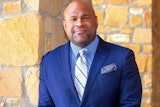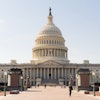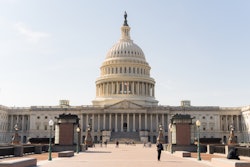PHOENIX — Dr. Allen Sessoms took over as president of the University of the District of Columbia 19 months ago with one mandate.
Either fix it or close it.
Sessoms was faced with many challenges including: dwindling enrollment, low academic standards for students along with no real tenure for professors. If professors lasted 90 days, they received tenure, he said.
“It was full of folks just put there,” Sessoms said.
The first step was to create a vision for the only public university in D.C., Sessoms said. Within 18 months, officials were on the road to turning around the historically Black institution. One of the first steps was to create a community college and a four-year flagship university with increased academic admission requirements, Sessoms said.
Sessoms, along with university presidents Dr. Glyn Davis (The University of Melbourne) and Dr. Kevin Manning (Stevenson University), spoke Monday at the American Council on Education’s annual conference in Phoenix. They all described their experiences with transforming their universities and the challenges that came with change.
Manning knew in 2000 when he was hired as president of what became Stevenson University, the institution was in danger. It was a one-campus college in Maryland with an obscure name, Villa Julie College.
Manning presented a plan to the board of trustees to build a second campus with residence halls six miles from the original campus. He told the board members the institution needed to become a university and they had to change the name.
As a former director of admissions, Manning knew the name was not helping.
“A brand has to be positive and neutral,” Manning said. “Ours was both confusing and negative.”
Manning wanted a name that would better reflect the identity of the institution. Although Villa Julie College had been open to men for more than 35 years, many local business owners still associated it as a Catholic two-year college for women. Stevenson, the town where one of the campuses is located, was eventually chosen.
All changes helped the university increase enrollment from 1,487 students in 2000 to 2,717 in 2009, build a second campus and award more than double the number of bachelor’s degrees — 605 were granted in 2009.
Manning offers advice for college leaders seeking change.
Be bold but “know when to move slowly to honor heritage and legacy issues,” Manning said. School officials kept Villa Julie College of Arts and Sciences to honor the school’s history.
Davis described taking his university, the largest in Australia, and shifting curriculum to convey to students the purpose of education went beyond training them for a profession but to learning about the world.
“You have to convey that the purpose hasn’t’ changed, but they way you go about it has,” Davis said.
For Sessoms, he knew he had to implement a system with focus on students and increase retention and graduation rates. Enrollment was down to about 4,700 from about 15,000 in the 1970s when UDC opened.
Change isn’t easy, nor is it overnight, Sessoms said. It’s going to take another decade, but officials have begun to “transform an environment that no one thought was transformable.”
Change also come in forms of diversity and changes to campus culture. In a separate conference session, “Diversity in Higher education in the Post-Obama Election World,” Northern New Mexico College presidential appointee Dr. Nancy ‘Rusty’ Barcelo challenged college diversity officers to make diversity a core value of their institutions and build it into the institution’s strategic plan.
“We have to frame diversity as an educational goal,” Barcelo said.
She also advised folks that centuries of racism won’t vanish just because voters elected President Barack Obama. “Our work now is as urgent,” she said.
The conversation must shift from looking at equality and diversity as a “problem to fix.” But rather to use it as a strategy to continue to transform organizations, Barcelo said.















